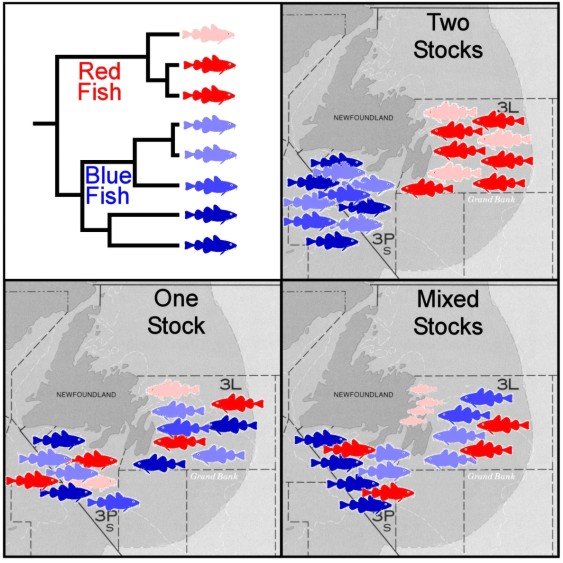
One Stock, Two Stocks, Red Fish, Blue Fish .... ?
Implications of DNA genomics for fisheries management & conservation
Sequencing of complete mtDNA
genomes from Atlantic
Cod shows a ‘family
tree’ [top left]
with two major lineages (red and blue fish),
and five sub-families within these lineages (shades of red and
blue). What implications does regional variation in the
distributions of these lineages across management zones have
for stock structure and conservation? Suppose that surveys show an
increasing abundance of fish in NAFO 3Ps and continued low density in 3L.